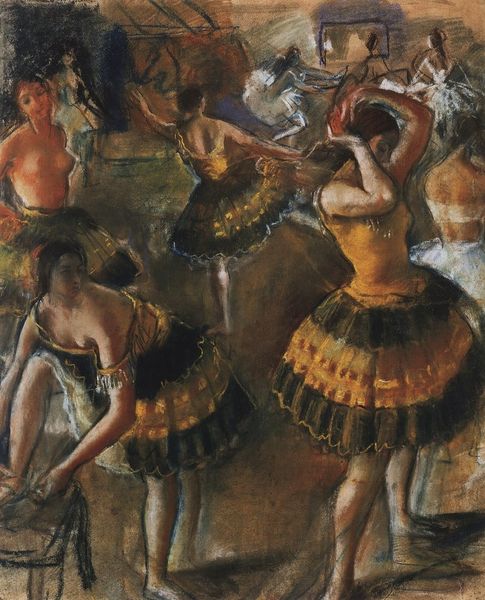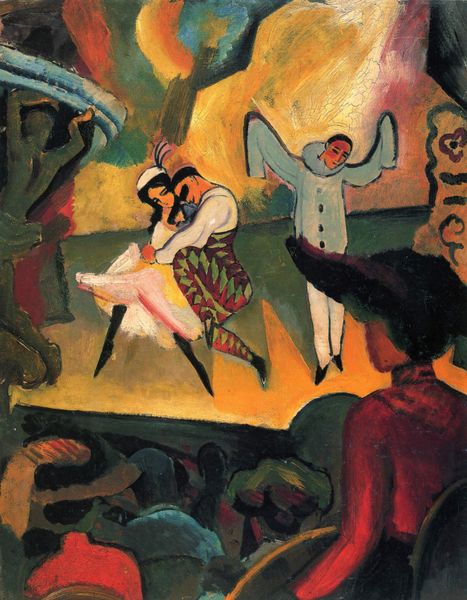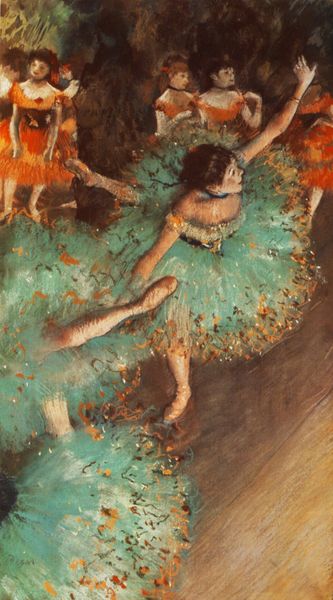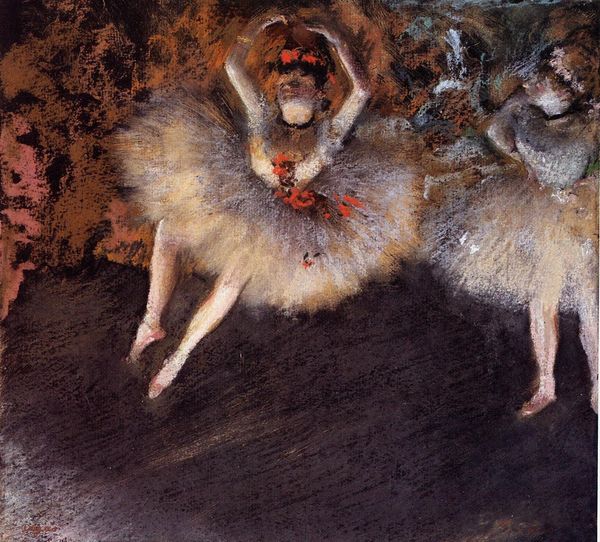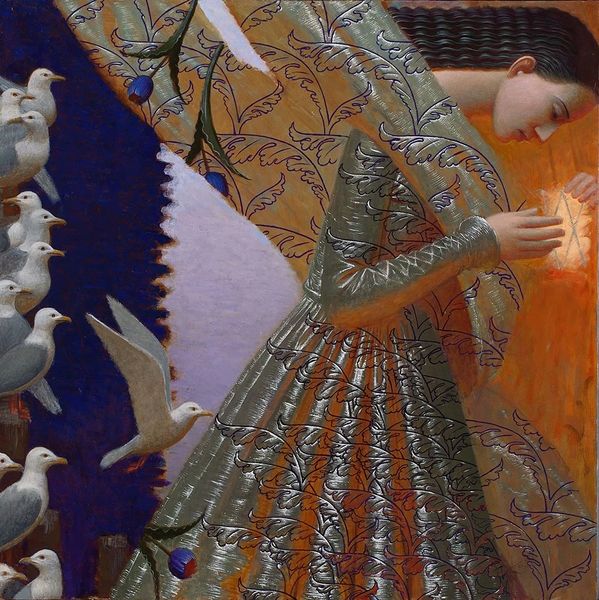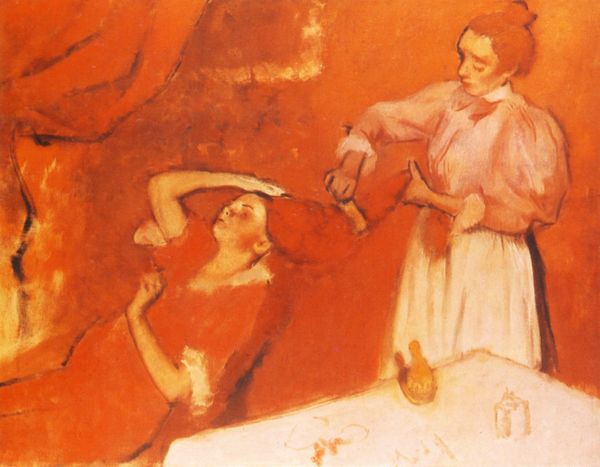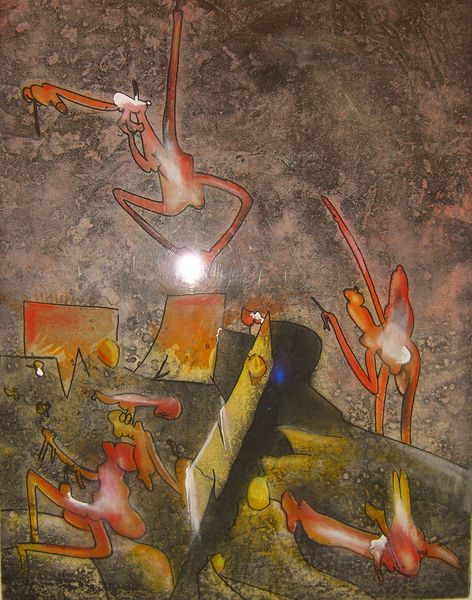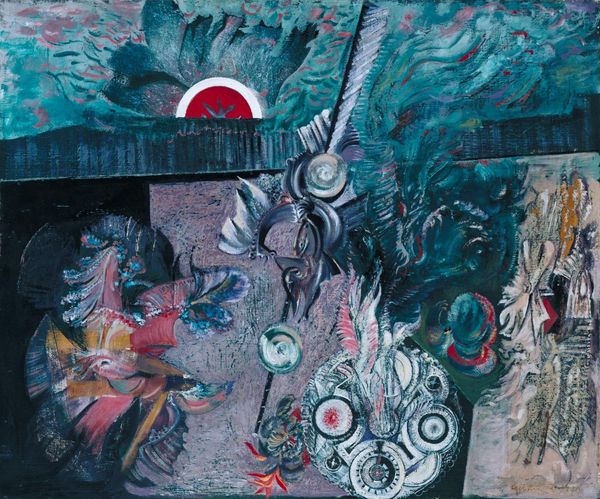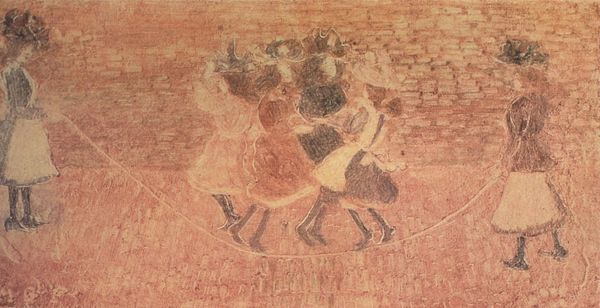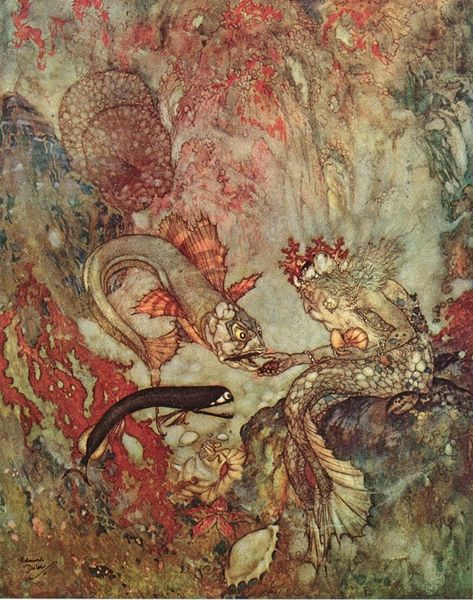
drawing, ink, pastel
#
portrait
#
drawing
#
impressionism
#
painted
#
figuration
#
oil painting
#
ink
#
france
#
cityscape
#
genre-painting
#
pastel
#
watercolor
Copyright: Public domain
Curator: Today, we're looking at Edgar Degas’ "Lowering the Curtain," created around 1880. Editor: It has an almost dreamlike quality, doesn't it? The pastel colors blend so softly. The horizontal composition—the line of the curtain and the row of dancers—it's remarkably serene, a stillness despite all the implied movement. Curator: Indeed. Degas was fascinated by the ballet and dancers as subjects. However, it’s important to note that his works weren’t always celebrations. He was often drawn to the grueling routines and social hierarchies within the ballet world, reflecting the societal expectations placed upon these performers. Editor: And he really captures the backstage atmosphere with such interesting textural contrast! Look at the scumbled effect used for the stage curtain and the dark underpainting used to suggest figures behind the lowering curtain and on the lower portion of the picture plane. How these features contrast with the relative clarity of the main figures creates so much atmospheric depth and dramatic intensity. Curator: Precisely. The lowered curtain serves not only as a physical object, but also metaphorically, suggesting perhaps the end of a performance, or even veiling the realities of the dancers' lives. It’s vital to remember that Degas positioned himself within the upper echelons of Parisian society and such perspectives informed his portrayal of these young women. He offers a commentary on spectacle and the consumption of art. Editor: You’re right, seeing the scene now with new eyes it seems so much less whimsical, there’s definitely a starkness to the scene that might represent those harsh realities. It appears in those textures in the work now too! Curator: Art, like life, presents us with layers to peel back and reflect upon. Thank you for helping peel back those layers today. Editor: And thank you for this very illuminating exchange. The artwork itself has shown how we too can draw insights from our dialogue here!
Comments
No comments
Be the first to comment and join the conversation on the ultimate creative platform.
